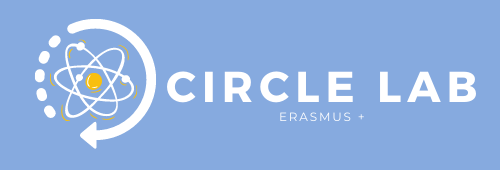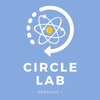Participating in the Circle Lab project deepens students' knowledge about using renewable energy

07-07-2022 by Kaunas school
Vytautas Magnus University Classic Education School – MC provides pre-school, pre-primary, primary, and lower secondary education. The school's mission is to provide learners with a safe environment and engaging learning conditions for children aged 2 to 16 from and around Kaunas. It aims to ensure opportunities for every student to seek personal progress and better learning results according to their possibilities and wishes. It also aims for children to gain lifelong learning competencies while paying attention to their personalities' civil, social and cultural development.
We are involved in different projects where not only students but also us teachers can participate in and deepen our competencies while learning new teaching methods and strategies. Our students are involved in different practical activities. They have excellent possibilities to gain more practical work skills and spread knowledge about our environment in many different ways.
While participating in CIRCLE LAB, we find a lot of new ways of learning and involving students in different activities and spreading their knowledge and awareness of circular chemistry and circular economy.
Solar energy – is one of the most promising sources of renewable energy. It is very interesting to mention that around 173,000 terawatts of solar energy strike the Earth continuously. That's more than 10,000 times the world's total energy use. Those numbers sound incredible, but unfortunately, it is not very easy to achieve high efficiency, so the photovoltaic systems used nowadays should be improved by using different materials.
As solar energy is considered a future energy source, science teachers should spread their knowledge and understanding about this type of renewable energy. The modules or non-formal activities about solar energy could be very useful for students.
A student has prepared his Annual Project and made his own dye-sensitized solar cell (DSSC) using natural organic dye (raspberry juice). The student has gained knowledge of how this type of solar cell is made. Also, he will be able to explain the working mechanism of the solar cell. After a lot of failures, a solar cell was constructed.

Image from Kaunas school
The process of making a solar cell is long. Work requires a lot of patience and hard work. In this way, the student can improve his practical work skills.
What is more, our students are planning to participate in an education “IGNITES CLASS” organized by Energy and Technology Museum in Vilnius, Lithuania. The students will have a possibility to discuss the use of renewable and non-renewable sources of energy and the human impact on our environment. The participants will find out how electricity is produced and how to consume it responsibly. Also, students will have the possibility to make their own solar element. Finally, they will check the gained knowledge with the Kahoot game.


